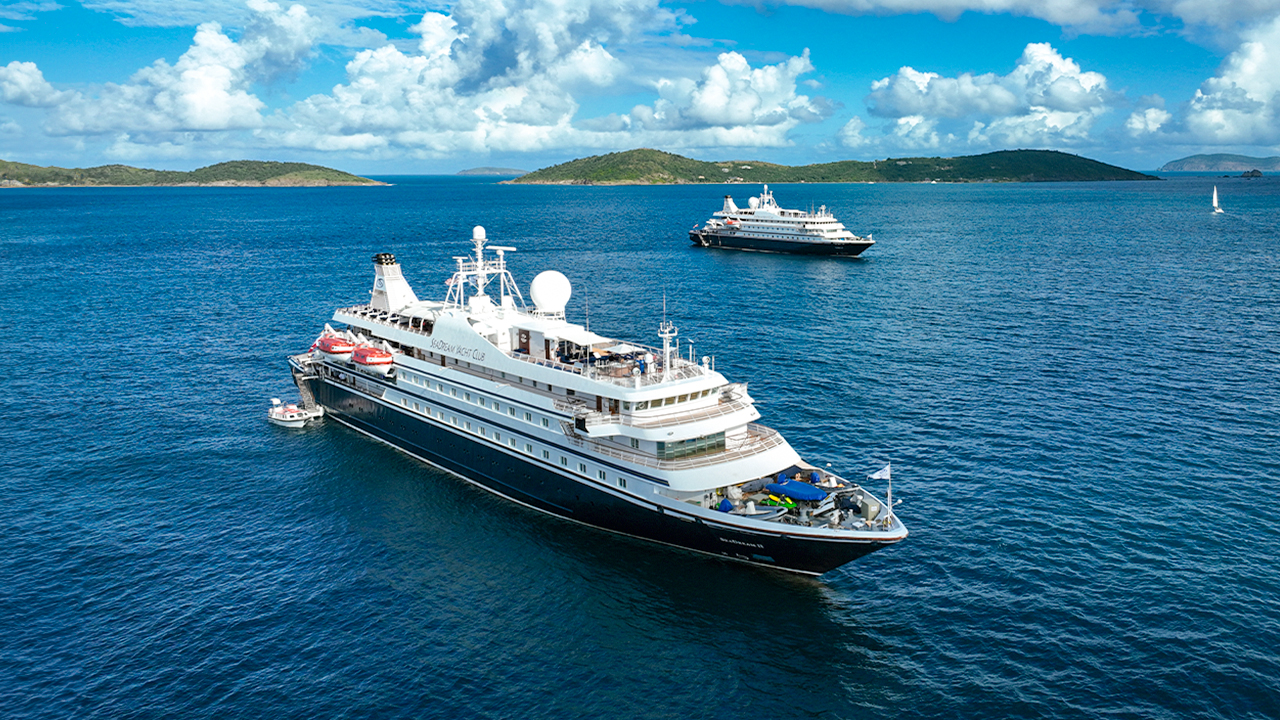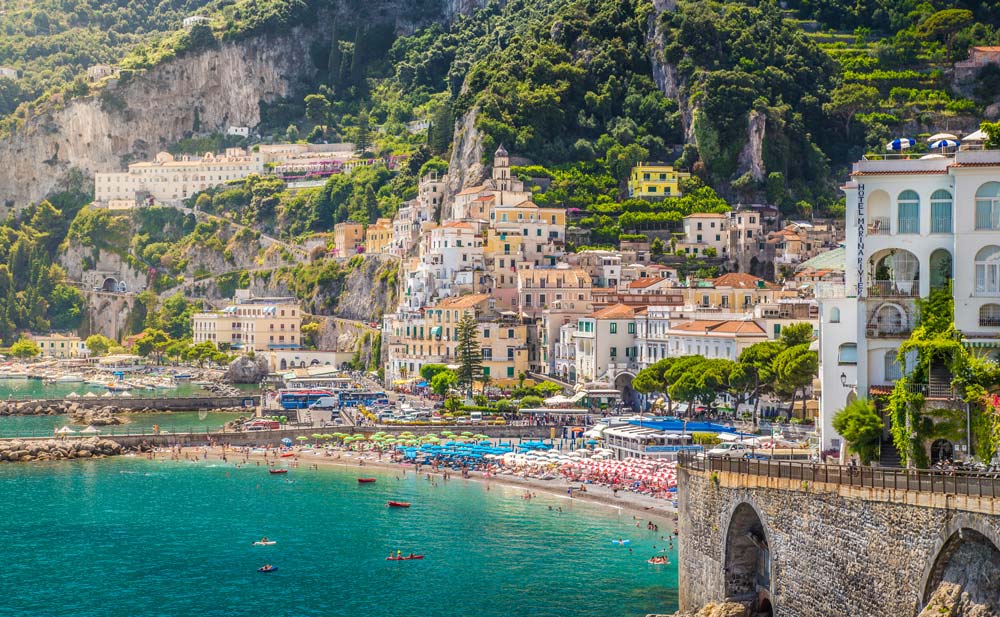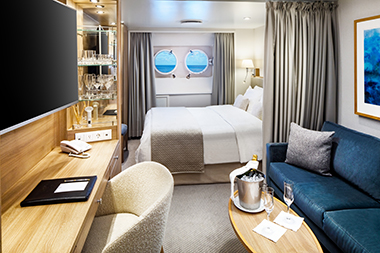
Piraeus, roughly translating to “the place over the passage”, is an important Greek port located within the Athens agglomeration, in the Attica Basin. It is 12 kilometers from the municipality of Athens, considered the fourth largest and is the third most populous amongst all the municipalities of Greece. Now a peninsula, Piraeus, originally a rocky island, was developed in early 5th Century B.C. when it was initially designated as Athens’ import and transit trade port. It is the largest marine-based shipping center of Greece, one of the largest ports in Europe, and considered the second largest passenger port in the world. Inhabited since the 26th Century, it wasn’t until the 6th Century B.C. that Piraeus began catching attention. The land of Piraeus was essentially impassable, flooded by the sea most of the year until centuries passed and the flooding ceased. By the 5th Century B.C. it became a navy base for the Athenian fleet for the natural harbors and the strategic potential they carried. Athenian general and politician Themistocles fortified Piraeus’ three harbors Kantharos, Zea and Munichia, created ship houses and completed his walls in 471 B.C., which led to the port becoming a great military and commercial harbor. There are many archaeological sites, points of interest and entertainment available in Piraeus. Most famous for its tavernas and cuisine, several popular events take place in Piraeus, such as the Ecocinema International Film Festival, the Maritime Festival, the Piraeus Rock Wave Festival and the Three Kings’ Way Festival. There are also many theaters, including the Municipal Theater, the open air Veakeio Theater, and the Menandreio Theater. Museums in Piraeus include the Archaeological Museum of Piraeus, the Merchant Shipping History Institute Exhibition, the Panos Aravantinos Decor Museum, the Georgios Averof Museum Ship and the Museum of Electric Railways. Be sure to catch the panoramic views available from the hill of Kastella, overlooking Athens and the Saronic Gulf!

Nafplion is a seaport town in the Peloponnese region of Greece that expands up the hillsides near the north end of the Argolic Gulf. The town was the capital of the First Hellenic Republic, from the start of the Greek Revolution in 1821 until 1834. This is simply one of the most beautiful towns in the area of Argolis (in eastern Peloponnese) as well as one of the most romantic cities all over Greece. SeaDream has the option to anchor allowing water sports or to dock in the heart of town offering amazing access. Some guests will climb nearly 1000 steps to the fortress. Others may want to participate in the wine tasting adventure or to Visit Mycenae.

This small Greek Isle is a best-kept secret. White-washed buildings, popular seaside cafes and bars, and a central piazza make Spetses a quintessential Mediterranean yachting port. Visitors to the island will enjoy visits to the Poseidonion Grand Hotel, idyllic Mediterranean beaches, and the island’s historic churches. You’ll step back to a simpler time as you quickly realize that Spetses is mostly automobile-free, so be sure to enjoy a traditional horse-drawn carriage ride along the seashore.

This Greek Isle's history dates back before the year 4000 BC. The island has a rich history of silver and lead mining and was one of the first places where currency minting occurred in Greece. Today, the island is frequented for its beaches, churches, festivals, food, and of course, classic Greek isle architecture.

Paros is an island of Greece in the central Aegean Cyclades group. With the popularity and sometimes overcrowding at Santorini and Mykonos, Paros offers a quieter, unspoiled Cyclades option. Historically, Paros was once known for its fine white marble, which gave rise to the term "Parian" to describe marble or china of similar qualities. Some consider Paros the most beautiful in this island group – you be the judge! It has beautiful beaches and charming villages. Most visitors make an effort to see the famous Church of Ekatontapyliani (Our lady of a Hundred Doors). This church is the holy place of Paros and is linked to the history and myths of Byzantium. Tradition and history state that the church began life in the reign of Constantine the Great (280 - 337 A.D.) or Justinian (527 - 565). After its restoration in 1959, this church, the brightest jewel in the crown of Orthodoxy in the Aegean, became the third most important Christian building in Greece, after the Panayia Akheiropoietos and St. Demetrios in Thessaloniki.

Mykonos is one of the most visited Greek Islands. It is part of the Cyclades group and lies between Tinos, Syros, Paros and Naxos. The island spans an area of 85.5 square kilometers (33.0 sq mi) and rises to an elevation of 341 meters (1,119 feet) at its highest point. Mykonos is so incredibly beautiful; it is not surprising that it has become one of the most desired destinations in the world. When you also add the cosmopolitan lifestyle, the sophisticated nightlife and the historical treasures of the nearby UNESCO Awarded Delos you’ll have the recipe for an unforgettable holiday. SeaDream usually anchors just of the famous windmills and tenders directly to the old town. Guests have a few organized options including the Sacred Island of Delos. Others may simply want to explore the island’s incredible beaches, boutiques, clubs and churches independently.

There is one main town on Hydra, known simply as "Hydra port". It consists of a crescent-shaped harbor, around which is centered a strand of restaurants, shops, markets, and galleries that cater to tourists and locals (Hydriots). Steep stone streets lead up and outwards from the harbor area. The charm of Hydra town certainly lies in her rich history, beautiful port and waterfront unspoiled by motorized vehicles. The island offers a rugged charm and some spectacular scenes and makes the perfect place for some self-exploration.

So narrow! So dramatic! You'll understand why SeaDream says "expect the unexpected" as your yacht transits the Corinth Canal. The canal was first completed in 1893, despite previous attempts from ancient times; the first plans being from 602BC. The Roman Emporer Nero actually started construction in 67AD, making the first cut himself with a golden pick. The canal we transit is 6.3 kilometres (3.9 mi) in length. Before the canal, ships sailing between the Aegean and the Adriatic had to circumnavigate the Peloponnese Peninsula adding about 185 nautical miles to their voyage.

Itea is a small town situated on the north coast of the Gulf of Corinth, 2 km west of Kirra, 8 km southwest of Delphi. The town has a nice beach along with some shops, cafes and restaurants. It allows the closest access to the incredible sight of Delphi which is within the top three archeological attractions in Greece and in 1987 was inscribed as a UNESCO Heritage Site. It is believed the Zeus wanted to find the center of the Earth so he sent two eagles flying from the eastern and western extremities and where they met was Delphi – becoming the “navel/center of the earth”. SeaDream has arranged the very best guides and vehicles from Athens to enhance this incredible visit further. Your guided visit highlights the ancient Sanctuary of Apollo, where Pythia, the celebrated Oracle dwelt, the Temple of Apollo, the Sacred Way, the amphitheater, the best-preserved stadium of Greece, and the Castalia Spring, where in ancient days the pilgrims had to wash before they were allowed to consult the Oracle. In the Delphi Museum, see such treasures as the Omphalos, which marked the center of the world, and the magnificent bronze Charioteer, one of the finest pieces surviving from the 5th century BC. After the museum, there will be free time to visit the village of Delphi. SeaDream has the option of docking along the small pier in Itea or anchoring off to provide water sports options. This is dependent on availability as well as a number of guests visiting the archeological site.


SeaDream yachts anchor in the bay of Giardini Naxos and offer fantastic views of recently awarded UNESCO Natural Site of Mt. Etna (2013) as well as Taormina perched on the cliffside. Shuttle bus service has been arranged to transport guests from Giardini Naxos to the entrance gate of Taormina town up to Castelmola which provides amazing views of the surrounding areas. Perhaps the “must do” adventure here would be to ascend Mt. Etna with your fellow SeaDreamers. Kindly check the Land Adventure tab for the specifics. Other options include an incredible and authentic feast at the Godfather Villa. As we are anchored and if conditions allow, we will offer water sports both in the morning and in the afternoon.

Amalfi is a picturesque town in the province of Salerno, in the Campania region of Italy. With its incredible views, it is the central town that makes up the very famous and UNESCO awarded Amalfi Coast (Costiera Amalfitana). Amalfi sports some impressive medieval architecture including; its cathedral of Sant'Andrea (St. Andrew), the church tower, the convent of the Cappuccini, founded by the Amalfitan Cardinal Pietro Capuano. They richly represent the artistic movement prevailing in Southern Italy. From Amalfi, we have created two exciting land adventures for you. One to Scenic Ravello and the other to Fascinating Pompeii. You may also choose to play from the yacht’s marina (Permission and conditions pending) or go on a very scenic hike with one of the officers.

Civitavecchia is a major port located in Rome, primarily utilized for maritime transportation of goods, as well as a fishing port. The commune’s name means “ancient town” and is one of the “Motorways of the Sea” in the Mediterranean, functioning as one of the main links between the mainland of Italy and Sardinia. The ancient name of the port was “Centumcellae,” first mentioned in a letter written by Pliny the Younger in 107 A.D., although scholars debate on whether the name was about the number of rooms of the Trajan Villa, or the number of natural creeks on the coast. Civitavecchia is a part of the Lazio Territory, an area which was confirmed to have social groups since pre-historic times, and the modern town was built over a pre-existing settlement of the Etruscan people in 107-108 B.C.E. (who debated to have founded Rome). In the beginning of the 2nd century, the harbor and town of Centumcellae were simultaneously developed by Emperor Trajan in the territory of Aquae Tauri. As the town became more popular for ships traveling westbound, the Thermal Baths were constructed on the hill of Ficoncella. Centumcellae flourished in the Imperial Age, and by 538 A.D., it had become a Byzantine stronghold. In 728 A.D., it became a member of the Papal States. The Saracens raided Centumcellae many times in the 9th century, prompting Pope Leo VII to have a newer and more secure settlement built by 854. The town, then known as Civita Vetula, was under the rule of several lords, and the Popes temporarily lost control during the French Rule in 1798-1815. In 1870 it entered the Kingdom of Italy. Civitavecchia was severely damaged during WWII, destroying many of the ancient monuments including Forte Michelangelo, which would be rebuilt in the 1950’s. Popular points of interest include the Forte Michelangelo, Terme Taurine, and Cattedrale di San Francesco. There is a wealth of Roman and Vatican architecture and tourists are encouraged to visit many of the museums and take the cultural tours available in this important sea port.
Suites & Staterooms
*Single Supplement for this voyage is 200% for Yacht Club Deck 2, 3 and 4. For Commodore, Admiral and Owners Suite, a 200% single supplement rate applies.
Government, Port, Document Issuance, Handling & Service fees: $671 per guest (included)
Please Note: Fares are capacity controlled and may change without notice. The fares are per person based on double occupancy. Single and third person rates are also available. SeaDream Yacht Club strongly recommends that all guests purchase travel insurance.
Yachting Land Adventures & Activities
Please check back soon for updates.
Testimonials
The best vacation we have ever been on. The combination of relaxed atmosphere and impeccable service was perfect. Mr & Mrs PedersonConnecticut
Fabulous yacht, magnificent food, great people, superb service, I can think of a few more adjectives, but to summarize – save and go on it – probably the best vacation I ever went on. Ian C.California





